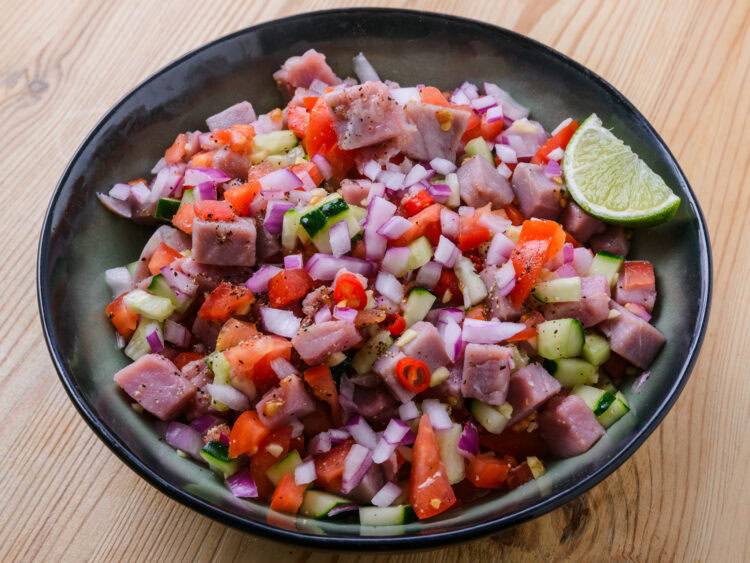A refreshing Filipino ceviche of raw tuna bathed in rice vinegar, bright citrus, and crisp vegetables.
The sun has barely risen. Aboard a wooden banca off Surigao, the workday has already given way to breakfast. A fisherman hoists his net, revealing a shimmering tanigue, still trembling in the rigging.
He splashes on coconut vinegar from an old soda bottle, then scatters onion, ginger, and a lone red siling labuyo over the flesh. Within minutes the fish tightens and blushes, passing from hand to hand as the salty tang meets the sharp burn of acid and spice.
This is kinilaw—seafood “cooked” not by fire but by vinegar. Across centuries and seas it remains unmistakably Filipino, its ingredients, regions, and lively debates keeping the tradition deliciously alive.
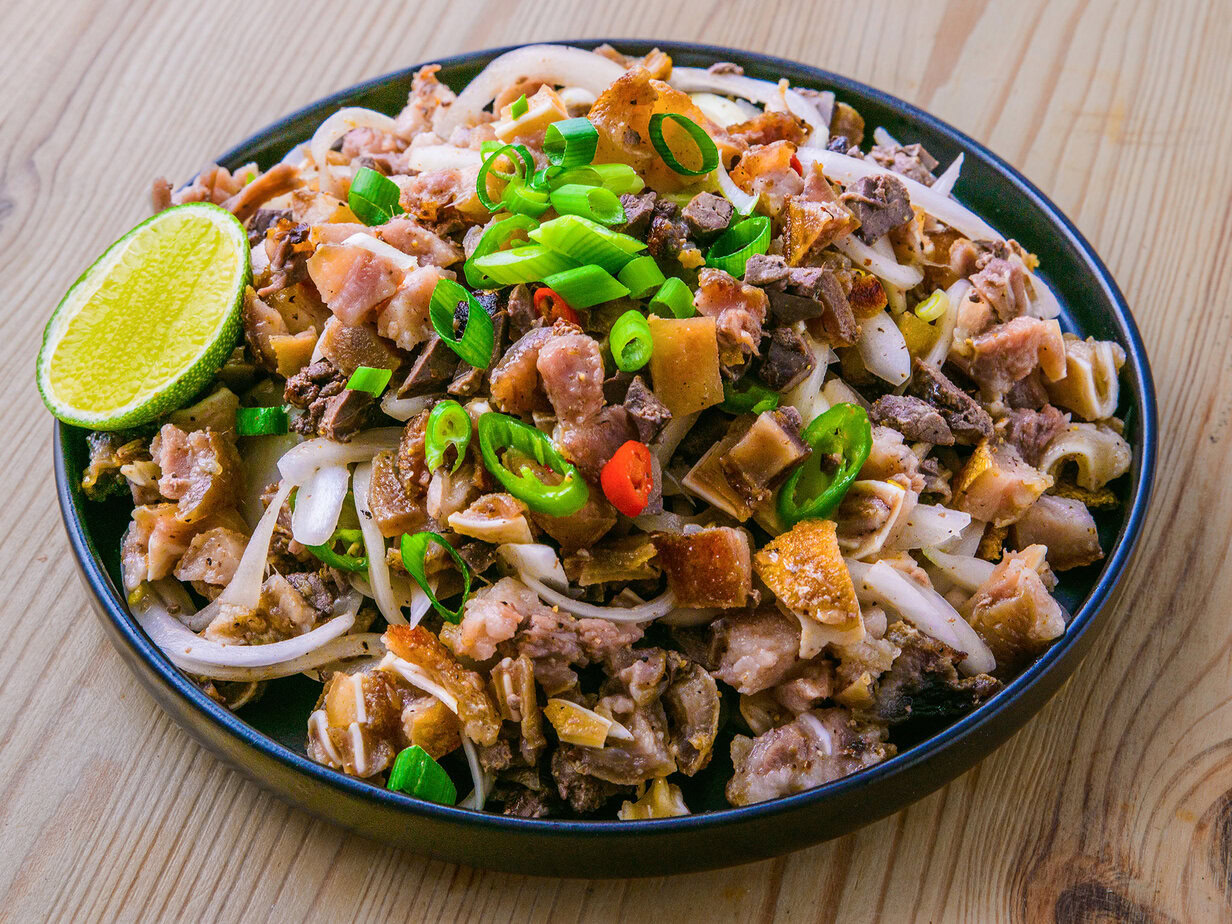
Origins of Kinilaw
While excavating a 10th-century midden in Butuan, archaeologists uncovered tiny fish bones trimmed into tidy cubes. Nearby lay husks of tabon-tabon, a wild fruit whose creamy pulp still enriches Mindanao kinilaw today.
Together, they quietly prove that even a millennium ago, Filipinos let vinegar stand in for flame. By 1613 the Vocabulario de la lengua tagala already listed “cquilao,” meat or fish eaten raw yet “lightly cooked” in suka, salt, and chili. The Visayan root kilaw simply means “to eat fresh.”
With sap to ferment and fish in every net, coastal communities developed their own takes long before Magellan’s fleet dropped anchor.
Centuries later Latin America would name its own cousin—ceviche—dressed with lime instead of vinegar. Yet kinilaw still takes precedence: vinegar first, citrus second, and it must be eaten before its sparkle fades.
Key Ingredients of Kinilaw
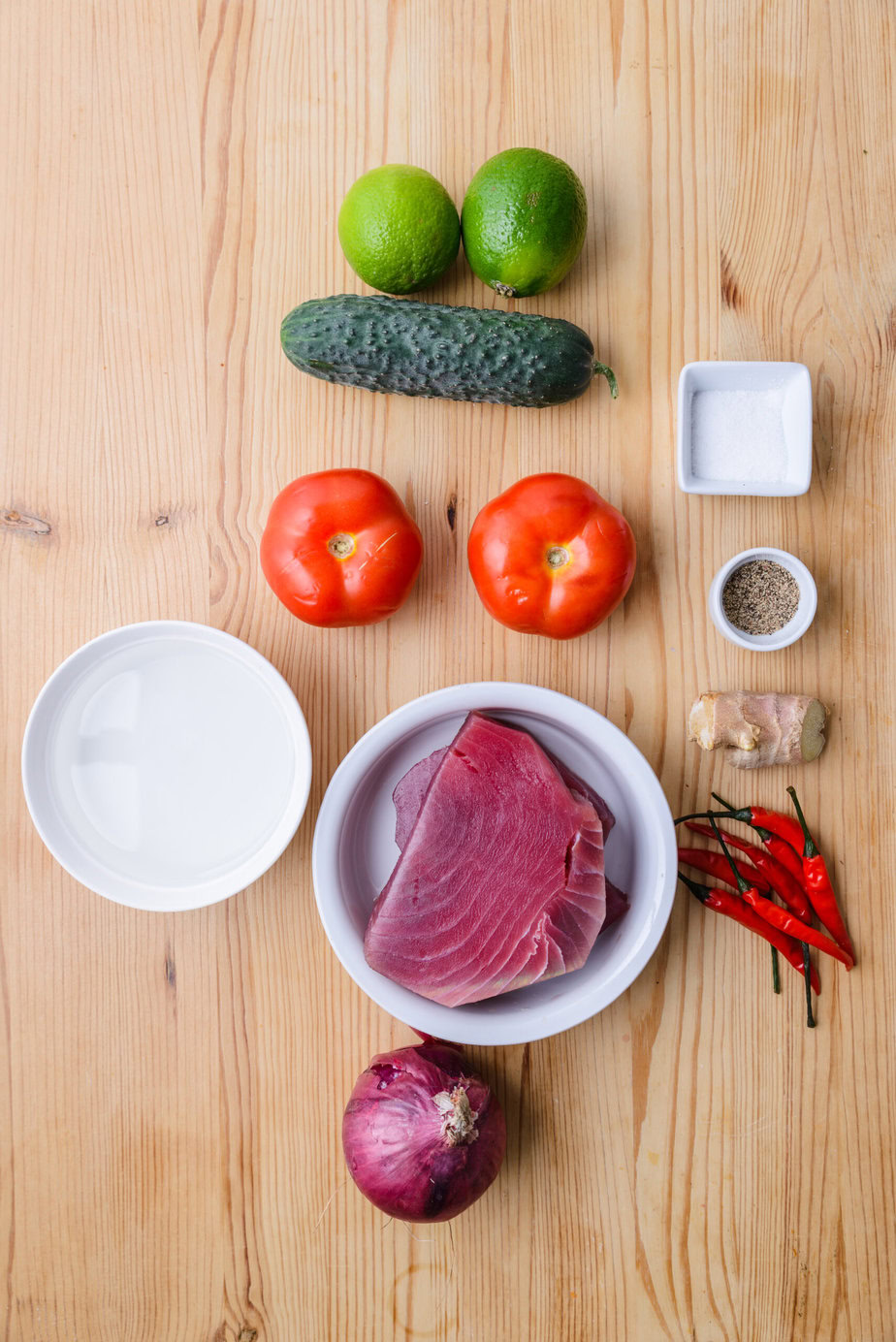
The fish: At the heart of kinilaw is pristine seafood—translucent tuna, marbled mullet, or Spanish mackerel—still carrying the scent of the sea.
Coconut or cane vinegar: sometimes the cloudy, mellow sukang tuba, tapped that very morning, adds depth. A squeeze of calamansi (substitute lime) or the fragrant zest of wild biasong lifts the dish several notes higher.
Paper-thin ginger shavings cut the richness; red onion adds crunch; bird’s-eye chili pricks the tongue just enough to summon the next bite. A pinch of salt seasons and, in seconds, firms the flesh.
Seasoned cooks briefly rinse the cubes in vinegar, drain, then toss everything together in a bowl that goes straight to the table. The fish should show a dull ring outside and a glassy center within—the moment when vinegar tightens the proteins without turning them opaque. No oil, no dairy, no long wait: the vinegar lets the flavor speak.
The Many Variants of Kinilaw
Mindanao and the Visayas scent their bowls with grated tabon-tabon; many say the fruit “tames the lansa” and spares diners indigestion. On Cebu’s coast, thin rings of biasong lemon perfume each bite. Siargao and Surigao swirl in a splash of coconut milk for creamy kinilaw sa gata.
Further north the Ilocanos turn to land: goat or pork is grilled, sliced, then bathed in the same sharp, spicy mix to become meat kilawin. In Davao, sinuglaw marries smoky pork belly with tuna kinilaw in one bowl where charred richness meets bright acidity.
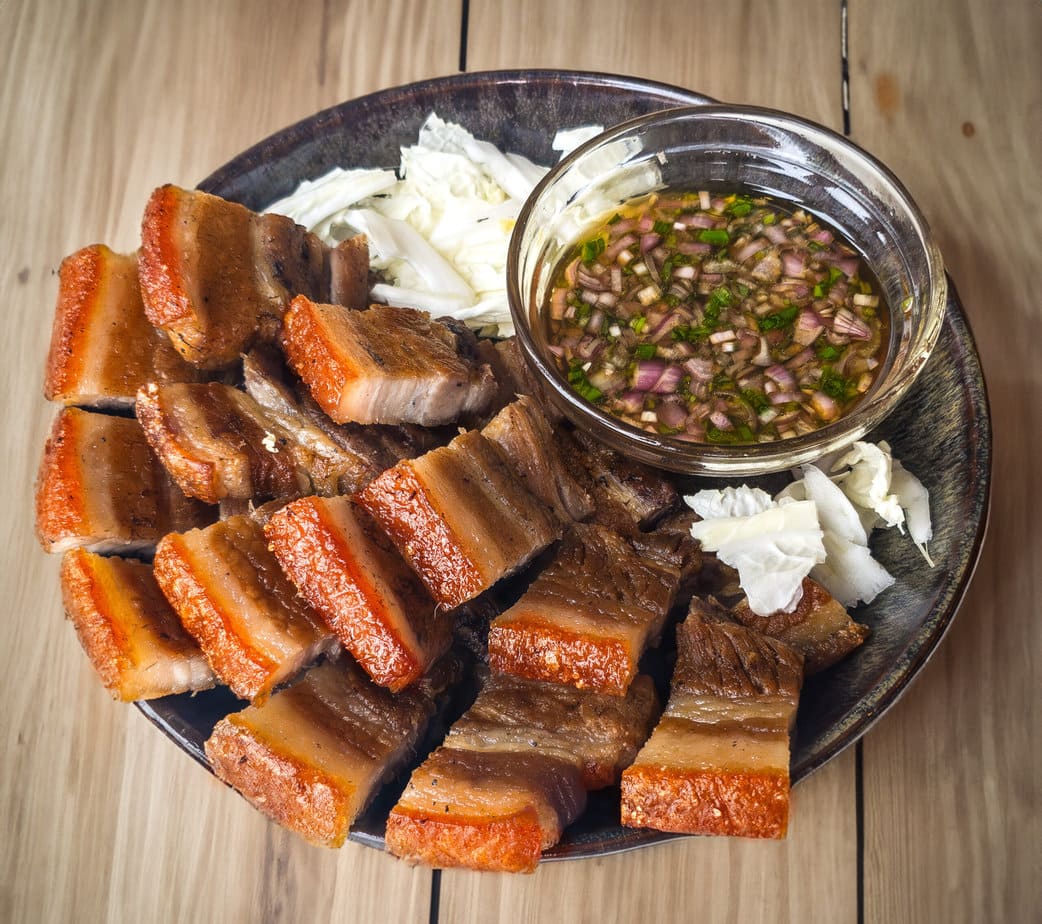
Modern cooks still police the borders: salmon raises eyebrows, and mayonnaise is downright blasphemous. Warning signs of inauthenticity include citrus-only marinades, sugar-heavy sodas, or fish soaked until chalk-white. Yet within these guardrails countless dialects thrive, each proclaiming, “This is how my lola does it.”
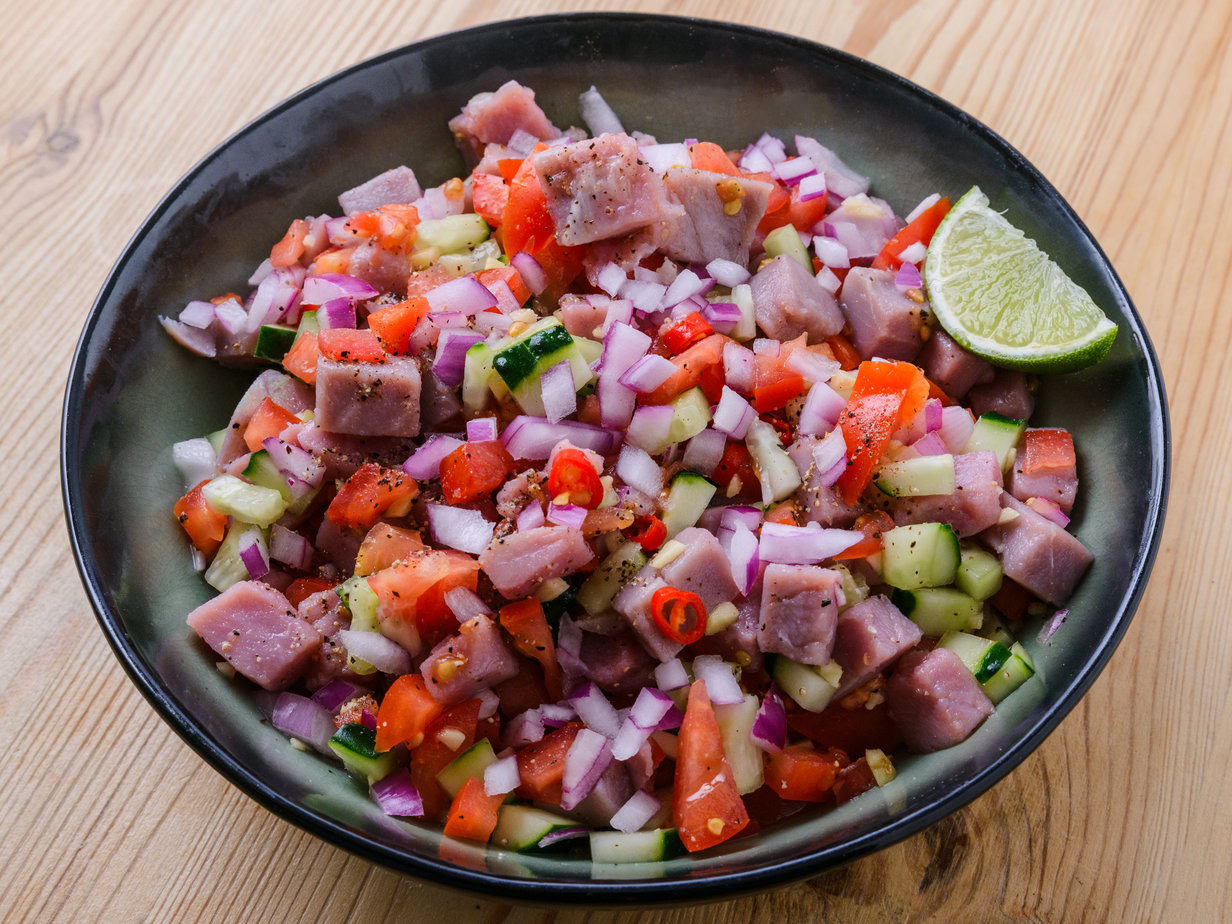
Tuna Kinilaw (Filipino Ceviche)
Ingredients
- 0.5 kg tuna fillet diced
- 230 ml rice vinegar or coconut or cane vinegar
- 1 tablespoon fresh ginger chopped
- 1 red onion chopped
- 2 ripe tomatoes chopped
- 0.5 cucumber diced
- 7 red chilies sliced
- 2 limes juiced, or triple the amount of calamansi if available
- Salt to taste
- Pepper to taste
Instructions
Preparation
- Rinse the tuna under cold water and pat it dry.0.5 kg tuna fillet
- Cut the tuna into bite-size cubes, discarding any skin or bones.

- Transfer the tuna to a non-reactive bowl, pour in the vinegar, and cover.230 ml rice vinegar
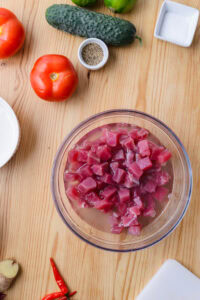
- Marinate in the refrigerator for about 1 hour.
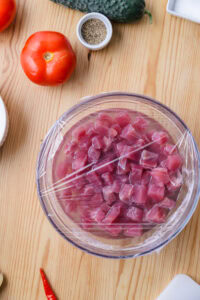
- Pour off the vinegar, quickly rinse the tuna under cold water, and drain well.
- Fold in the ginger, onion, tomatoes, cucumber, chilies, and lime juice. Season with salt and pepper to taste.1 tablespoon fresh ginger, 1 red onion, 2 ripe tomatoes, 0.5 cucumber, 7 red chilies, 2 limes, Salt, Pepper
- Chill for at least 1 hour before serving.
- Serve chilled as an appetizer or with steamed rice.
Notes
- Use ultra-fresh tuna or tuna that has been properly frozen to minimize health risks.
- For extra zing, add a few fresh cilantro leaves just before serving.
Culinary Sources
- Kinilaw – Wikipedia (English)
- Kinilaw: history, origin and evolution – Pinoy Wit (English)
- Bisaya kinilaw recipe (Filipino ceviche) – HUNI SA DAPLIN (English)
- History of Kinilaw – Kinilaw Mix (English)
- Kinilaw recipe (Philippine marinated fish) – Reddit (English)
- Kinilaw: a Philippine cuisine of freshness – Philippine Books (English)
- Tuna kinilaw with tabon-tabon and biasong (makrut lime) – TheLoneRider (English)
- Kinilaw: an authentic Visayan dish – Lyn Sojor (English)
- Filipino fusion ceviche – Reddit (English)
- Kinilaw recipe (Filipino ceviche) – The Kitchn (English)
